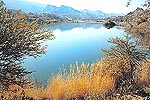Coming back to its origin and history...
 The master plan of Islamabad was prepared in 1960 by M/s. Constantinos Doxiades, a Greek firm of
Architects. Construction started in October 1961. The city came into
life on 26 October 1966, when the first office building of Islamabad
was occupied. It is a carefully planned modern city of Pakistan.
There are ample opportunities for walking, jogging, hiking and
trekking around Islamabad in the lush green Margalla Hills. The
Margalla Hill range offers excellent hiking and partying
opportunities with magnificent vistas opening on all sides. A
network of trails having more than 120 kms length has also been
developed for enthusiastic hikers.
The master plan of Islamabad was prepared in 1960 by M/s. Constantinos Doxiades, a Greek firm of
Architects. Construction started in October 1961. The city came into
life on 26 October 1966, when the first office building of Islamabad
was occupied. It is a carefully planned modern city of Pakistan.
There are ample opportunities for walking, jogging, hiking and
trekking around Islamabad in the lush green Margalla Hills. The
Margalla Hill range offers excellent hiking and partying
opportunities with magnificent vistas opening on all sides. A
network of trails having more than 120 kms length has also been
developed for enthusiastic hikers.
The urban area is divided into eight zones: administrative,
diplomatic, residential, institutional, industrial, commercial,
greenbelt, and a national park that includes an Olympic village.
Islamabad hosts many well-organized parks and gardens, mosques,
universities and shrines, Museums and archaeological sites. Lok
Virsa, the National Cultural Center and Museum off link Road, has
exhibits, handicrafts, and examples of dress from different regions
of Pakistan.
 If you have a half day or more at
your disposal, a pleasent walking excursion would be to the cave
tomb of the areas most important saint, Bari Imam. For Shopping
enthusiasts, Islamabad has many Bazaars like Aabpara, Super, Jinnah
Super, Blue Area etc. Apart from such excursions one may visit the
Shakar-Parian hill top, the Beautiful Jasmine Garden, the Rawal
Lake, the Pir Suhawah hill top and Daman-e-Koh. Faisal Mosque is
in-itself a beautiful piece of architecture and a must see. For
jogging and soft core walks Fatima-Jinnah's huge park is an ideal
spot. In sport activities one can find golf courses and bowling
alleys along with a few cricket and football grounds. With such
varied attraction Islamabad poses to be an all-time favourite
amongst tourists coming from within and outside Pakistan.
If you have a half day or more at
your disposal, a pleasent walking excursion would be to the cave
tomb of the areas most important saint, Bari Imam. For Shopping
enthusiasts, Islamabad has many Bazaars like Aabpara, Super, Jinnah
Super, Blue Area etc. Apart from such excursions one may visit the
Shakar-Parian hill top, the Beautiful Jasmine Garden, the Rawal
Lake, the Pir Suhawah hill top and Daman-e-Koh. Faisal Mosque is
in-itself a beautiful piece of architecture and a must see. For
jogging and soft core walks Fatima-Jinnah's huge park is an ideal
spot. In sport activities one can find golf courses and bowling
alleys along with a few cricket and football grounds. With such
varied attraction Islamabad poses to be an all-time favourite
amongst tourists coming from within and outside Pakistan.


